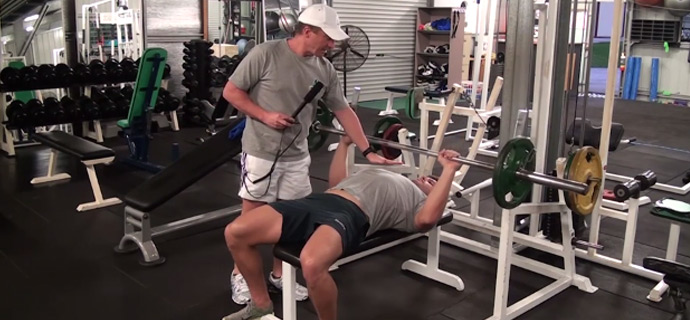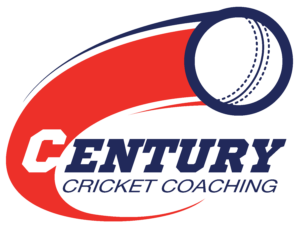Ok, I’m going to give you a bit of an insight into how we go about getting our body prepared for cricket during the pre-season.
I’ve called in for a chat with Miguel Rojano, who is the strength and conditioning coach inside my online t20 academy.
He’s got a wealth of knowledge and specialises in cricket specific fitness. He’s got a great track record of not only getting players in shape, but keeping them injury free and on the park.
He’s going to answer a few questions I’ve got for him…

What is the purpose of pre-season training?
The purpose of pre-season training is to build on your strengths and work on your weaknesses to ultimately make you a better cricketer. Each year you want to be getting stronger, faster and better at your craft.
So get in the gym, get yourself stronger, work on those base exercises, get your range of motion right, work on your mobility.
Practice outside the gym, listen and understand what you’re doing and why you’re doing it.
If you want to be a faster bowler, it doesn’t just mean bench pressing more. You’ve got to get each area right. You’ve got to get the connective tissue right, the range of motion right…and in the pre-season is the best time to do that.
How important is a good strength and conditioning pre-season to a players success?
Extremely important. Talent will only get you so far.
You will notice players have a poor season and then all of a sudden next season come out and dominate.
Generally that’s by no mistake. That’s the result of hours and hours of work, not just in the gym but on every aspect that I spoke about in pre-season.
To the person watching from the outside it looks like an overnight change. But the commitment, dedication and work behind the scenes during pre-season results in those dramatic improvements.
How long is a professional preseason and how long would you recommend a youth players pre-season to go for?
As I said, training for cricket is a bit of a continuum, and by that I mean you’re working on something all year round.
Pre-season is usually around 12 weeks. Adaptations take about 4-5 weeks. Meaning you will feel the difference but not see much of a difference and growth takes about 12 weeks. So 5 weeks in you’ll be feeling good. 12 weeks in you’ll be looking and feeling the part. That’s why pre-season generally goes for around 12 weeks.
Do you do the same thing throughout preseason or do you break it into different outcome goals?
You make sure you break it up year to year, depending on what you need to work on. Just because you did something last year, doesn’t mean you have to do it again this year.
So you need to think, what didn’t quite work for me this year? My coach wants me to bowl faster, what do I need to do to achieve that? Really focus on what it is you need to improve and plan your pre-season accordingly.
During pre-season mix it up to trick your mind out of routine. For example if it’s normally leg day, do an upper body session occasionally.
What age would you recommend players start doing strength and conditioning?
Very common question. It’s more a question of what type of exercise should you start doing at what age?
What happens in the gym, if you’re with the right trainer will never compare to the impact on the body that happens on the cricket field.
I could have a 6 year old in the gym with me and they’d be safe. But you know they’re not going to be lifting weights, they’re going to be doing body weight work, learning balance and range of motion etc.
I say to everybody, get your kids in the gym as young as you can because they’ll have that skill for the rest of their lives. The same as swimming, kids that start young can swim for the rest of their lives, kids that start late never fully pick it up.
Get in the gym early. But GET THE RIGHT COACH and make sure they’re safe.
If you’ve got a coach telling your 8 year old to do deadlifts, then you need to find another coach.
13, 14, 15 year old athletes is when we really want to see them in the gym. That’s when we see a lot of injuries. Poor posture, lower back issues, growing fast, soft tendons.
You really need to make sure they’re been supervised and guided in the right way because the impact on the cricket field is going to cause an untrained body injuries.
Do you train harder in preseason than in season?
The intensity in season needs to stay. You need to make sure they’re consistently working at a high intensity but less sessions and for a shorter duration.
The beauty of pre-season is that players are generally not playing cricket so you can work them really hard more often for longer both in the gym and on the running track.
In season it becomes more about customized training sessions for each athlete based on their output on match day.
If you’re a bowler and have bowled 30 overs over a weekend, the following week is going to be about recovery and a lot less physical work.
If you’re a batsmen who gets out first ball or bowler that gets hit all over the park and taken off after two overs, you’re the ones who need to get the joggers on and go for a run!
Pre-season…everybody needs to work hard!
Do bowlers and batters have different strength and conditioning programs?
Bowlers and batters will be similar but have some differences.
In general bowlers need to be working on leg strength, core strength and shoulder stability.
Batters need to be working on upper body and cross core strength.
Again it’s going to depend on each athlete. The smartest way to train someone is not to look at them as a batter or bowler but as an individual.
Back to Chris…
Thanks for giving us your time Miguel, some great insights there and I hope our readers got a lot out of it.
Leave a comment below if you have any questions.
If you’d like to learn more from Miguel, visit australiancricketinstitute.com and drop your email in, we’ll notify you when a spot opens up.

